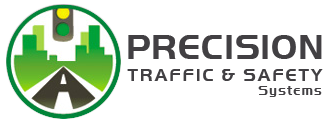A traffic study consists of a comprehensive investigation of existing physical and operating conditions. Analysis of the study data provides insight into possible remedial measures, if any. Remedial measures may include various traffic control measures, such as speed zoning, channelization, signing, traffic signals, safety lighting, or a combination of these.
A complete traffic study for a proposed traffic signal or flashing beacon installation requires the collection of sufficient data on the physical, traffic, and operational characteristics of the intersection. Some of the data can be difficult and time consuming to collect. Examples of the types of data typically collected are:
- Condition diagram – A study should be made of existing conditions at the study location and along each approach to it. Where the location is open to traffic, the study should include existing traffic control devices (signs, signals, markings, speed zones, etc.).
- Location map– A city or area location map should be prepared to show the relationship of the proposed installation to other traffic signals, highways, business areas, and traffic generators.
- Photographs– Photographs should be made of all approaches to an intersection, ramp, or any other location being studied for a traffic signal. Generally, only one photograph is necessary for each approach if the photograph is taken from a position approximating that of a passenger car driver approaching the intersection. This would normally be from 46 to 91 m (150 to 300 feet) from the study location. More than one photograph may be required for a particular approach to fully illustrate problems at the location. Peripheral features may also be helpful in defining any operational problems. The location and approach view direction of each photograph should be indicated on the photograph itself.
- Information– Accident (crash) information for traffic studies is obtained primarily through mainframe computer reports.
- Vehicular and pedestrian traffic counts– Up-to-date traffic and pedestrian volume counts reflect the characteristics of traffic. These volume counts, when compared to the established warrants, help determine the appropriate type of traffic control device, if any.
